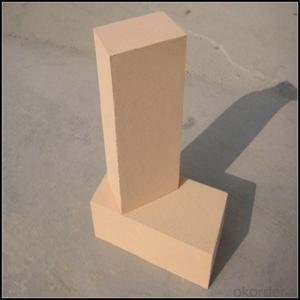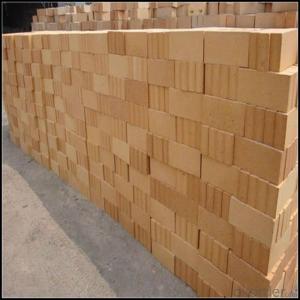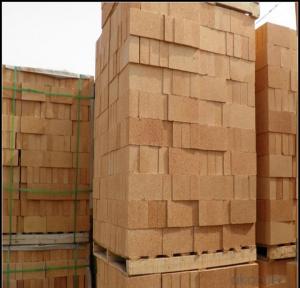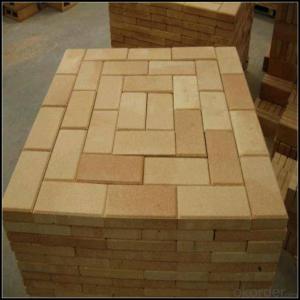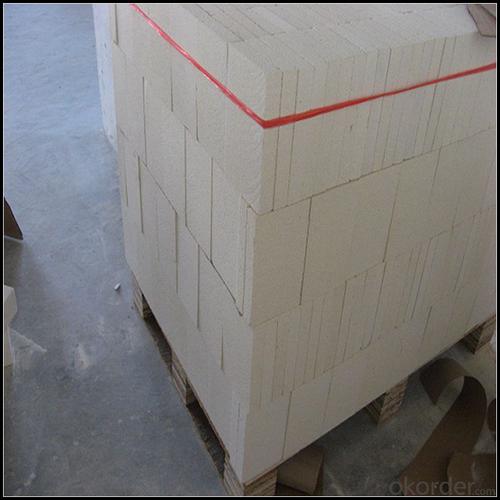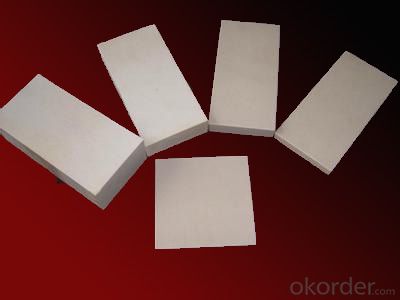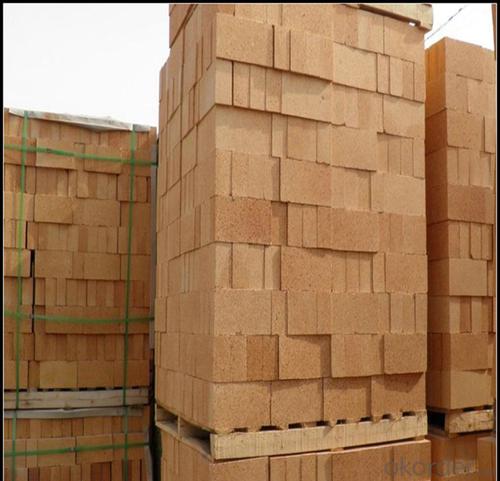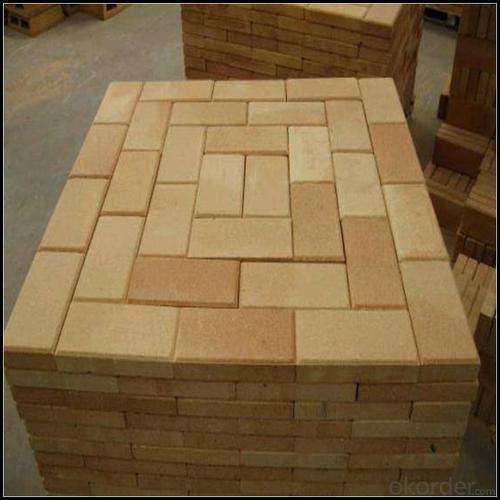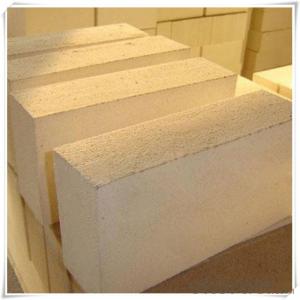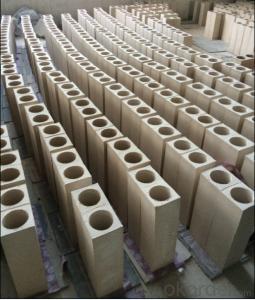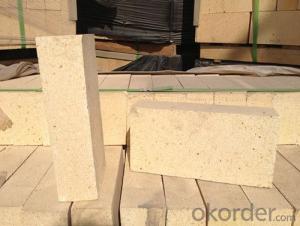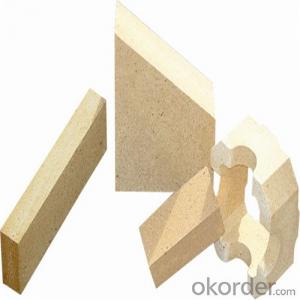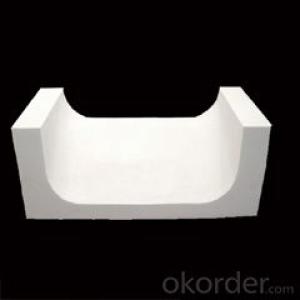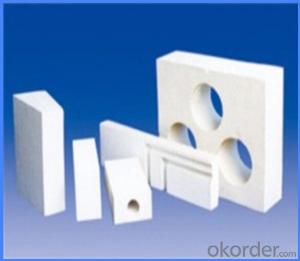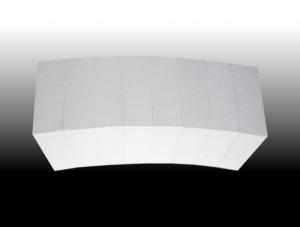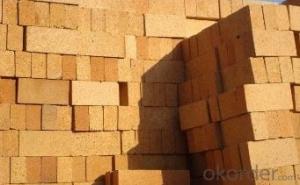SK32, SK34 Insulating Fireclay Refractory Brick for Kiln Use
- Loading Port:
- China main port
- Payment Terms:
- TT OR LC
- Min Order Qty:
- 1 m.t
- Supply Capability:
- 800 m.t/month
OKorder Service Pledge
OKorder Financial Service
You Might Also Like
Refractory Brick
CMAX firebricks are classified under temperature between 1300℃ to 1700℃, manufactured from high purity alumina clay by mixing, press-forming, drying, sintering and machining. Bricks contain carefully-graded organic fillers which are burned out during sintering to give a uniform controllable pore structure. This technique makes product feature low thermal conductivity and excellent heat insulation
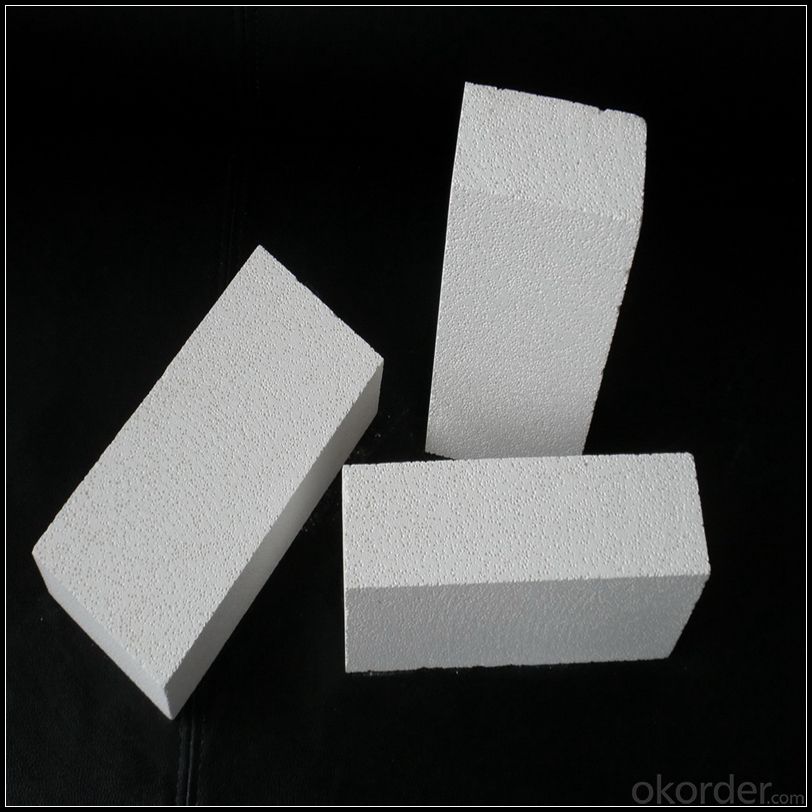
Features
1. Certificate of Quality for each parcel
2. Raw material from China, Australia and Germany
3. Good price
4. Many sizes in stock ; Making tiles accroding to your drawings
5. Resistance: Excellent
6. Quick delivery& Professional service
Application
1.Carbon bake furnaces in the aluminium industry
2.Preheat zones and cyclones of rotary cement kilns
3.Insulation for glass tanks
4.Coke ovens
5.Blast furnaces
6.Reheating furnaces
7.Suspended roofs
8.Lime kilns
9.chimney
Data Sheet
Classification Temperature (℉/℃) | 3000/1650 |
Bulk Density (g/cm3 ) | ≤1.0 |
Thermal Conductivity | |
800℃, W/m.K | ≤0.39 |
1000℃, W/m.K | ≤0.43 |
1200℃, W/m.K | ≤0.48 |
Reheating Linear Change (%) | 1550℃×12h |
≤0.9 | |
Chemical Composition (%) | |
Al2O3 | ≥75 |
Fe2O3 | ≤0.5 |
Packaging & Shipping
Packaging Details:Be packed in fumigated wooden pallets
Delivery Detail: 30 days after order

Our Services
Optimum solution and product supply of refractories for high temperature industries, such as iron steel, non-ferrous, petrochemical and building materials.
Engineering design, contract and consult for refractories, and civil architecture design.
Research, development, manufacture and sale of superhard materials.
R&D, manufacture and sale of special packing materials for export.
Inspection, supervision and arbitration of refractories.
Consultation and services in refractories information.
Training and cultivation of high-level talents in refractories profession
Sales Network

Company Information
CNBM (China National Building Material) Group is the largest comprehensive building materials group in China that in integrate scientific research, manufacturing and logistics into one entity. The largest building materials and equipment specialists in China. Upon State Council approval, today CNBM owned more than 300 subordinate manufacturing factories and servicing companies. There are 6 fully owned public listed companies and 11 partially owned with substantial shares public listed companies. In many of these fields, CNBM is playing the leading role in the building industry in the country.
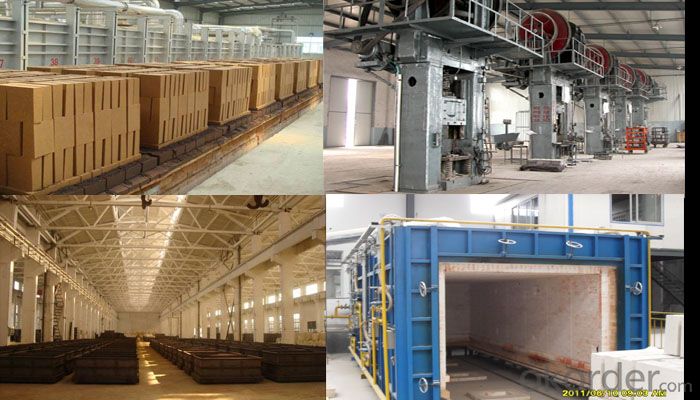
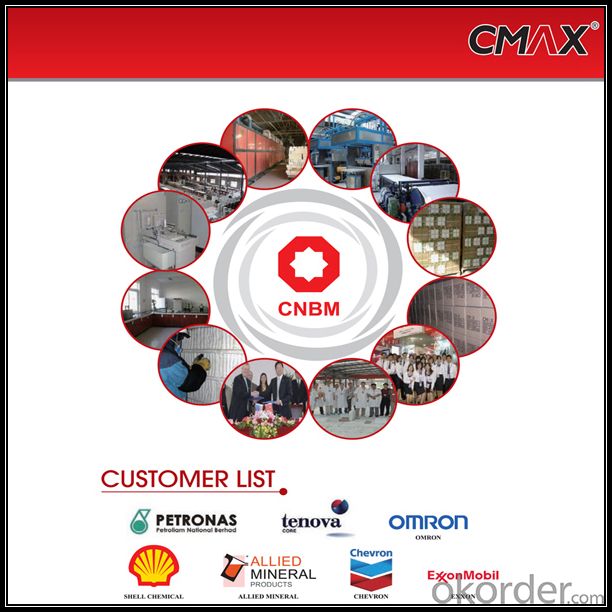
FAQ
1. Which products do you have?
We have all kinds of refractory brick, castable, mortar, cement, ceramic fiber products, etc.
Or you could browse our products to choose what you need.
2. Can you give me a brief introduction of the application of your products?
We are mainly specializing in the refractory materials in iron and steel, cement, glass, ceramics, petrochemical, electric power Industry, etc.
3. If I need your offer, what information do you need?
In order to choose suitable products, it will be appreciated to provide us the information, such us specification, technical data, order quantity, products application etc. If any question, please contact us freely.
- Q: Can insulating fire bricks be cut to custom sizes?
- Yes, insulating fire bricks can be cut to custom sizes. Insulating fire bricks are typically made from lightweight materials such as ceramic fibers or lightweight aggregates, which make them relatively easy to cut. They can be cut using various tools such as a saw, knife, or specialized cutting equipment. It is important to take proper safety precautions and use appropriate tools and techniques to ensure a clean and accurate cut. Additionally, it is advisable to consult the manufacturer's guidelines or seek professional advice to ensure that the cutting process does not compromise the integrity or thermal properties of the insulating fire bricks.
- Q: Do insulating fire bricks require preheating before use?
- Yes, insulating fire bricks typically require preheating before use. Preheating the bricks helps to remove any moisture or volatile organic compounds that may be present in the material. This is important because moisture or volatile compounds can cause the bricks to crack or even explode when exposed to high temperatures. Preheating also helps to condition the bricks and prevent thermal shock, which can occur when the bricks are rapidly exposed to extreme temperatures. By slowly and gradually increasing the temperature, the bricks are able to expand and contract without any damage. Therefore, it is recommended to preheat insulating fire bricks before using them in order to ensure their durability and performance.
- Q: Can insulating fire bricks be used in the construction of combustion chambers?
- Yes, insulating fire bricks can be used in the construction of combustion chambers. Insulating fire bricks are made from lightweight, porous materials that have excellent thermal insulation properties. This makes them ideal for use in high-temperature applications, such as combustion chambers, where the insulation helps to contain and control the heat generated during the combustion process. Insulating fire bricks have a high resistance to heat transfer, which allows them to effectively retain heat within the combustion chamber. This helps to improve the overall efficiency of the combustion process by reducing heat loss to the surrounding environment. Additionally, the insulating properties of these bricks can help to prevent overheating of the outer walls of the combustion chamber, reducing the risk of structural damage. Furthermore, insulating fire bricks are designed to withstand high temperatures, making them highly durable and resilient. This is crucial in combustion chambers where intense heat and fluctuating temperatures are common. Their ability to withstand thermal shock and thermal cycling makes them a reliable choice for this application. In summary, insulating fire bricks are an excellent choice for the construction of combustion chambers due to their thermal insulation properties, ability to retain heat, and resistance to high temperatures. They contribute to the overall efficiency and safety of the combustion process, making them a valuable component in combustion chamber construction.
- Q: Do insulating fire bricks require any special storage conditions?
- Yes, insulating fire bricks require special storage conditions. They should be stored in a dry and well-ventilated area to prevent moisture absorption, which could lead to cracking or damage when exposed to high temperatures. Additionally, they should be protected from direct sunlight and extreme temperature variations to maintain their structural integrity.
- Q: Can insulating fire bricks be used as a refractory lining material?
- Yes, insulating fire bricks can be used as a refractory lining material. Insulating fire bricks are designed to have low thermal conductivity, which means they can effectively insulate against heat transfer. This makes them suitable for applications where high temperatures need to be maintained or controlled, such as in kilns, furnaces, and industrial ovens. Refractory lining materials are used to protect the structure of these high-temperature environments from the extreme heat generated inside. They need to be able to withstand the thermal shocks, chemical reactions, and mechanical stresses that occur during operation. Insulating fire bricks offer excellent thermal insulation properties, as well as high temperature resistance, making them an ideal choice for refractory lining applications. In addition to their insulating properties, insulating fire bricks also have low density, making them lightweight and easier to handle and install. This can be beneficial in applications where weight is a concern or where refractory linings need to be replaced or repaired frequently. It is important to note that the specific type and composition of insulating fire bricks may vary, and different applications may require different properties. Therefore, it is essential to consult with a refractory engineer or supplier to ensure the chosen insulating fire bricks are suitable for the specific requirements of the application.
- Q: Are insulating fire bricks resistant to mold or mildew?
- Insulating fire bricks do not have resistance to mold or mildew. These bricks are made to withstand high temperatures and provide insulation, but they do not naturally prevent mold or mildew growth. If exposed to moisture or dampness, mold and mildew can still develop on the surface of these bricks. To avoid mold or mildew, it is crucial to keep the bricks dry and well-ventilated. Regular cleaning and maintenance can also be effective in preventing mold or mildew growth on the bricks.
- Q: What is the weight of insulating fire bricks?
- The weight of insulating fire bricks can vary depending on their size and composition. On average, insulating fire bricks weigh between 3.5 to 5 pounds (1.6 to 2.3 kilograms) per brick. However, it's important to note that this weight can fluctuate based on the specific manufacturer and the density of the brick. It is always recommended to check the product specifications or consult with the supplier to get an accurate weight for the insulating fire bricks you are interested in.
- Q: Can insulating fire bricks be used in low-temperature applications as well?
- Yes, insulating fire bricks can be used in low-temperature applications. These bricks are designed to have low thermal conductivity, making them suitable for retaining heat and insulating against temperature fluctuations. They can effectively withstand lower temperatures while still providing insulation and preventing heat loss.
- Q: Can insulating fire bricks be used in ceramic kilns?
- Certainly, ceramic kilns can make use of insulating fire bricks. These bricks are specifically crafted to possess a minimal thermal conductivity, enabling them to better retain heat. Consequently, they prove to be an excellent option for lining the kiln walls, facilitating the conservation and uniform distribution of heat within the kiln chamber. Furthermore, these fire bricks are lightweight and possess exceptional resilience against thermal shock, rendering them highly durable and capable of withstanding the elevated temperatures commonly achieved in ceramic kilns.
- Q: Do insulating fire bricks have a high thermal conductivity?
- No, insulating fire bricks have a low thermal conductivity.
Send your message to us
SK32, SK34 Insulating Fireclay Refractory Brick for Kiln Use
- Loading Port:
- China main port
- Payment Terms:
- TT OR LC
- Min Order Qty:
- 1 m.t
- Supply Capability:
- 800 m.t/month
OKorder Service Pledge
OKorder Financial Service
Similar products
Hot products
Hot Searches
Related keywords

